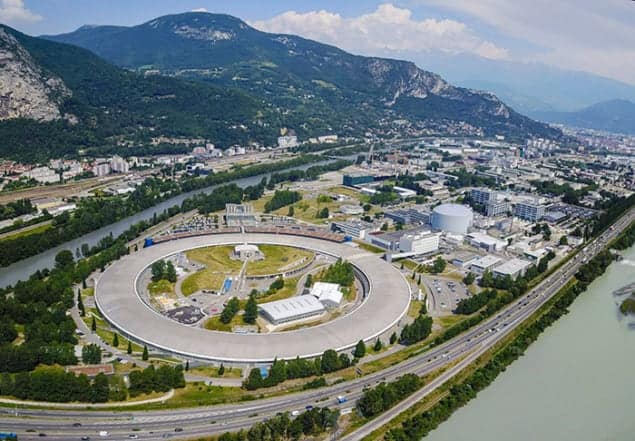
Four new beamlines will be built at The European Synchrotron (ESRF) X-ray source in Grenoble, France. One of the new beamlines will be used for serial macromolecular crystallography, which will allow scientists to work-out the structures of proteins from measurements made on tiny samples measuring just 1 μm across. Hard X-ray diffraction microscopy will be done on another new beamline and will allow researchers to study the structures of materials on length scales from millimetres to nanometres. This could prove very useful for understanding how some materials undergo structural failure.
The third new beamline will be dedicated to the use of coherent X-rays to study dynamical processes in samples as varied as heart muscle, teeth and smartphone displays. Last but not least, high-throughput X-ray tomography will be the focus of the fourth new beamline. This new facility will provide images of the interiors of large objects at sub-micron resolution and could be used in a wide range of applications including characterizing aeroplane components to studying the insides of archaeological mummies.
Extremely brilliant
Work on the new beamlines will begin next year and should be completed by 2022. This will allow users to take advantage of the current €150m upgrade to ESRF – called the Extremely Brilliant Source – which is also scheduled for completion in 2022.



